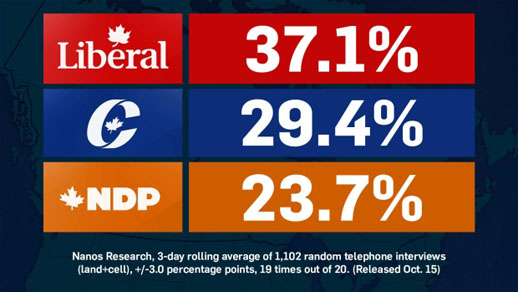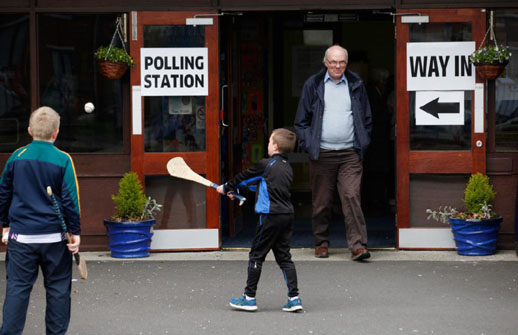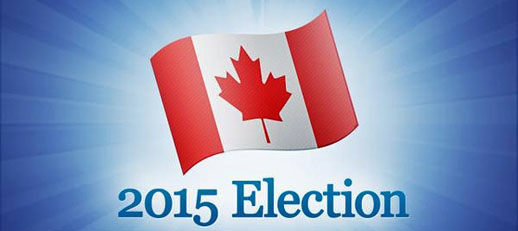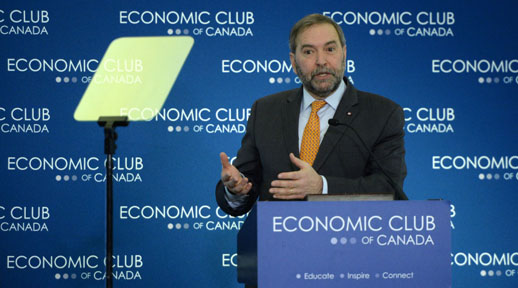
VanRamblings believes that the various polling companies — in suggesting that Justin Trudeau and the Liberal Party of Canada maintain a seven-plus-point lead over Stephen Harper — have understated support for Mr. Trudeau and the Liberals, and that in fact, on October 19th the Liberal Party could very well emerge with a majority government of more than 170 Members of Parliament in a rejuvenated and much changed nation’s capital.

Pollster Quito Maggi, CEO of Mainstreet Public Research — which predicted the NDP’s orange crush in Alberta earlier this year — told The National Observer’s Fram Dinshaw in an article published yesterday that …
“It’s just a matter of how big the momentum is for the next few days, it could end up in a landslide relative to what we’ve seen for the majority of this campaign, which was a three-way deadlock.”
According to Mainstreet’s polling data, the Liberals are surging across Ontario’s vast heartland, with current support for the party pegged at 47 per cent of the electorate to only 30 per cent support for the Tories, while Tom Mulcair’s New Democrats lag far behind at just 18 per cent support.
More worryingly for Stephen Harper’s Conservatives, the Liberals are surging in Toronto’s suburban 905 ridings, as the NDP collapse has handed the anti-Harper vote straight to the Grits, in a vote that is no longer split.
“Right now everything that’s happening nationwide is being confirmed by what’s happening in individual ridings,” said Maggi. “If things continue moving in the direction that they’ve been going, the eventual outcome is a Liberal majority. It still has to move a few more points.”
Over the Thanksgiving weekend, a record 507,920 British Columbians cast a ballot at the advance polls — a whopping 96% increase over 2011, when 259,278 eligible voters in B.C. cast advance ballots — indicating not only almost certain change in government at the federal level come October 19th, but generational change, unlike anything Canadians have witnessed in almost 50 years, dating back to 1968 when Pierre Elliott Trudeau swept to power in an overwhelming victory that proved near revolutionary.

In exit interviews conducted by the three main parties outside the advance polling stations, recorded data indicates that almost 60% of those casting a ballot were in the 18-44 age group, which suggests much greater involvement by the millennial generation in the 2015 election over 2011, when only 38.6% of voters aged 18-44 voted in the previous election.
All you needed to do was look around at the number of baby buggies and strollers, the number of young children running around along the polling lines hour upon hour, with their parents lined up leading up to the table where voters were issued their ballot — there was a new and vital energy at the polling stations, consisting not just of the parents of these young children, but of the children themselves, who represented a new electorate of future engaged citizens, an electorate of families of every description.
In 2015, in order to make polling results more accurate, pollsters are “weighting” published poll results over raw data returns, correlating past voting behaviour with current voting intention.
Given that roughly four out of ten voters aged 18-44 voted in the 2011 election, only four tenths of raw data collected for the 18-44 age group are factored into published poll results. Meanwhile, more than 70% of voters in the 55-80 age group cast a ballot in 2011; the weight given the voter intention of seniors by pollsters is counted at a much greater seven tenths.
If, in fact, as this past weekend’s advance polling station exit interviews would indicate that almost 60% of voters age 18-44 will in fact cast a ballot in 2015, pollsters have been woefully understating current voting intentions for the millennial generation, exit interviewees indicating to enumerators that they had cast ballots in overwhelming numbers for the Liberal party.

The Liberal Party of Canada have momentum on their side, as Justin Trudeau’s message of hope — very similar to the campaign of hope waged by Barack Obama in 2008 — appears to be resonating with a broad cross-section of the voting electorate. Even if Stephen Harper successfully manages to dampen the prospects of a surging Trudeau campaign, it would only mean that most of the 70 per cent or so of Canadians desiring a change in government would cast a ballot for a party other than the Tories.
As of today, according to CBC pollster Éric Grenier at his poll amalgamation site threehundredeight.com, the Liberals are now leading in 15 seats in British Columbia, 10 seats across the three Prairie provinces, an astounding 68 seats in Ontario, 24 seats in Québec, and 27 seats in the Maritimes and the Territories, for a potential total of 144 seats in Canada’s 43rd Parliament, up eight seats today over yesterday, as the wave of support for Justin Trudeau and the Liberal Party of Canada continues unabated.

According to Mainstreet’s Quito Maggi, traditional New Democratic Party voters in Ontario, Alberta, and British Columbia who supported their provincial NDP branches abandoned the federal party as it pitched right, as the Liberals wooed them over with its resurgent progressive messaging.
“By taking that vote for granted and tacking right and trying to outflank Trudeau on those economic issues they lost their base on the left, and by the time Mulcair and the NDP realized that and tacked back left it was too late,” says Maggi.
Maggi goes on to report that Mainstreet Public Research polling results indicate that the Liberals have enjoyed access to a large pool of such traditional NDP voters, as 55% of New Democrat respondents have indicated they were prepared to vote for Justin Trudeau and the Liberal Party in the 2015 federal election, a troubling development for the NDP.
While the 70 per cent of Canadian voters wanting change would now appear to be flocking en masse to the Liberal tent — and may yet prove to be Stephen Harper’s worst nightmare on Monday evening, October 19th — the Conservatives retain their core, right-wing Reform-Alliance support base of roughly 30% who, despite all, remain loyal to the slumping Tories.